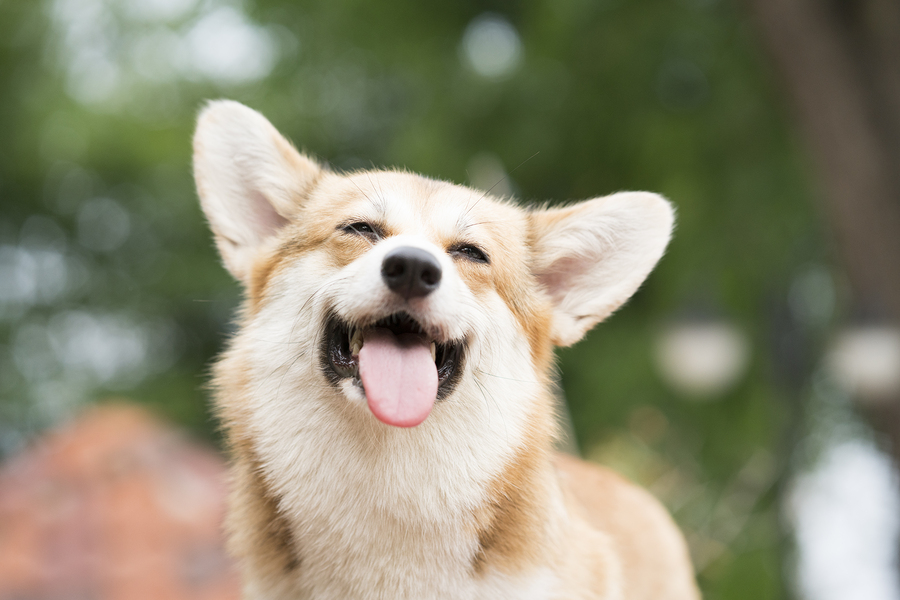When your dog does something you want her to repeat, you offer a reward. You may think of a reward as a tasty treat, a cheerful “Good dog,” or a pat on the head. These are all rewards that work for most dogs, helping to show them you’re happy about what they just did. But rewards can be creative and personal as well. Using a variety of positive outcomes to reward a dog’s behavior will make a dog more attentive and more excited about whatever activity you two are practicing. Plus, using a variety of rewards will prevent a dog from staring at the pocket where you keep his treats or nudging you to pat pat pat. Having many different ways to reward your dog will keep her on her toes and you on yours as well.
Step one is knowing, really knowing, what your dog loves: not only what he loves to eat, but what he loves to do. Most dogs, given the chance, are avid game players. One of my favorite rewards is to thank the dog for responding to a cue by immediately segueing into a game, especially when it’s the first time she responds to a difficult (for her) cue. Here’s an example.
Suppose your dog doesn’t lie down on cue. Down puts a dog in a vulnerable position, and some dogs might not be relaxed and comfortable enough to do a down in certain situations. So the first time such a dog willingly lies down when asked, I would offer verbal praise and immediately initiate a favorite game: I’d toss a ball and tell her to find it and instead of repeating the cue she just responded to, I would keep playing. In fact, an important reward might be not asking your dog to immediately repeat what she just did well.
The best way to add to your list of rewards is by observing your dog and seeing what tickles her, what she loves to do. If there’s an activity that guarantees happiness, then you have found a wonderful reward to add to your list. It could be something huge, such as a run down to your pond and the chance to swim. It could be something small, like you saying “Yay!” for that perfect sit-stay or speedy, cheerful recall, or playing your dog’s favorite game.
One night, a storm blew up suddenly and the thunder was so loud, I thought it was right in my yard. My dog, Ziggy, has never shown any signs of fear from storms but this felt like it was too close for comfort. He looked startled. Immediately, the sound still in our ears, I cheerfully said “Yay!” The message, which Ziggy got, was “This is a good thing. This is fun.” The reason I was able to quickly reassure Ziggy was that “Yay!” is a favorite reward when we play games, simple but powerful enough to convince Ziggy in the face of booming thunder that he was perfectly okay. A quick, simple “Yay” is sometimes all the reward your dog needs.
How does a reward become so powerful? Of course, some rewards are classically powerful, such as food and petting. But that can also make them powerfully distracting. A verbal reward that lets a dog know she’s doing exactly what she should be doing without interrupting that activity is, to my mind, an ideal reward. It communicates its message without distracting from the activity. Since Ziggy gets a “Yay!” for running to find his toy outside, “Yay!” has become a reward that gives the right message but does not curtail the activity.
Does this mean everyone should use “Yay!” as a reward? No way! You want a variety of rewards so you can match the reward to the situation. I can say “Yay!” exactly when Ziggy snags his toy. I don’t have to wait until he comes back when I might, say, offer him a treat. So it’s clear that the reward is for the find in this case. At other times, a pat or a treat would work best, or a drive in the car, or a long, long walk. When you have a variety of ways to encourage a dog, to tell her that she’s doing well or that you appreciate and approve of the things she’s just done, you can choose the reward that’s right for the moment.
What is a reward? It’s a form of communication that lets your dog know she’s pleasing you. Anything from a steak to a smile can do the trick. Every dog is an individual, and what is rewarding for your dog will be equally unique.
This article was reviewed/edited by board-certified veterinary behaviorist Dr. Kenneth Martin and/or veterinary technician specialist in behavior Debbie Martin, LVT.








